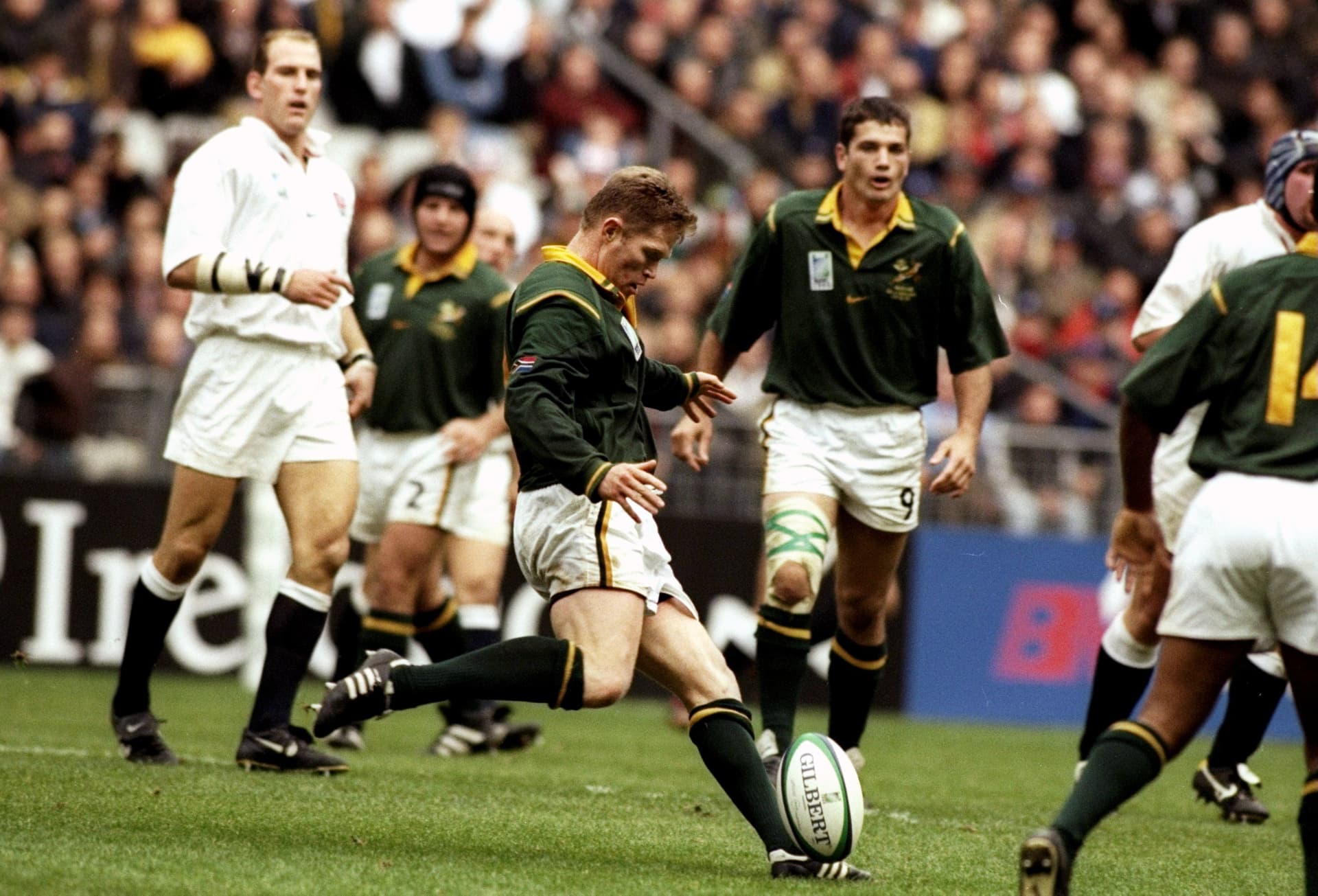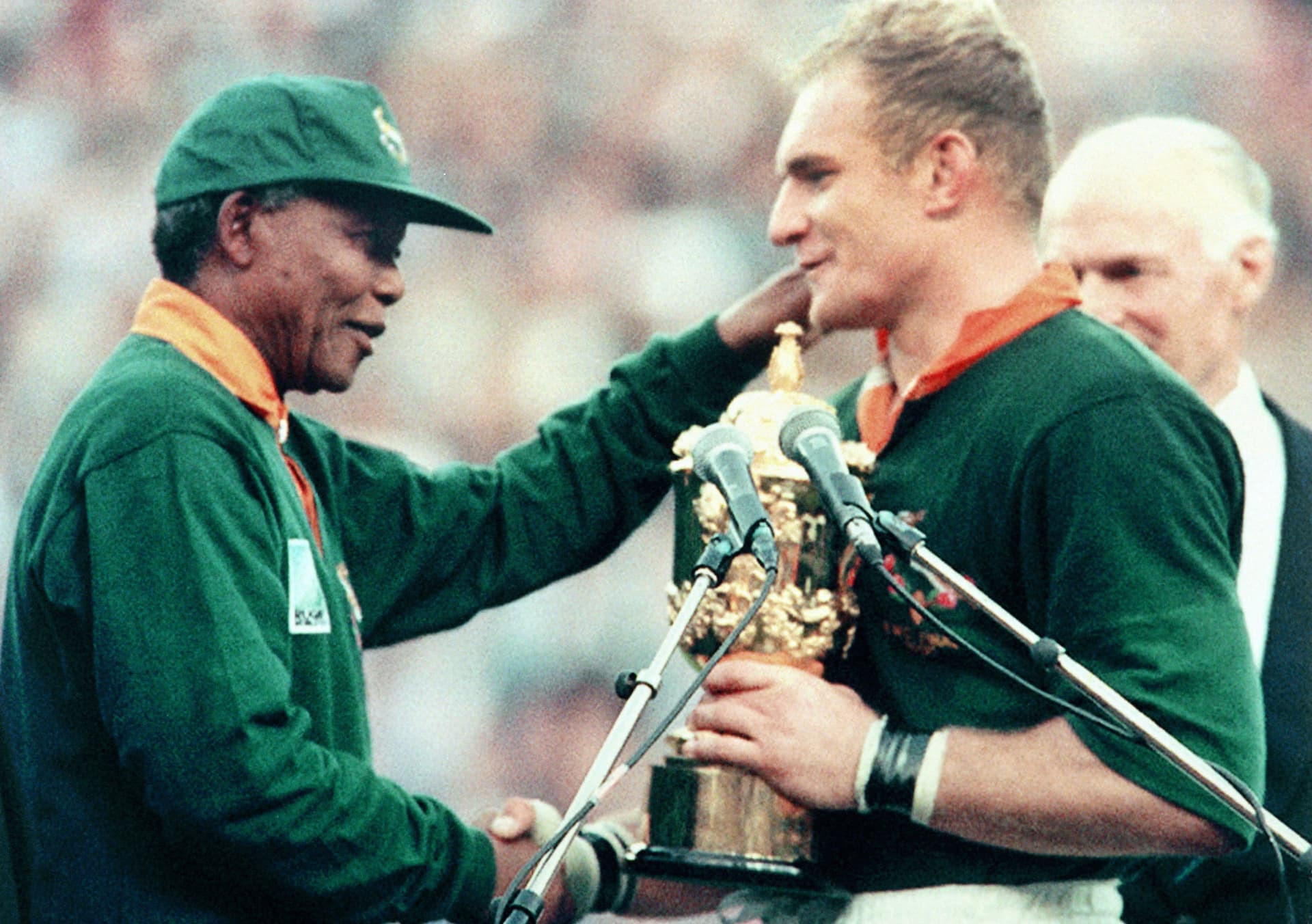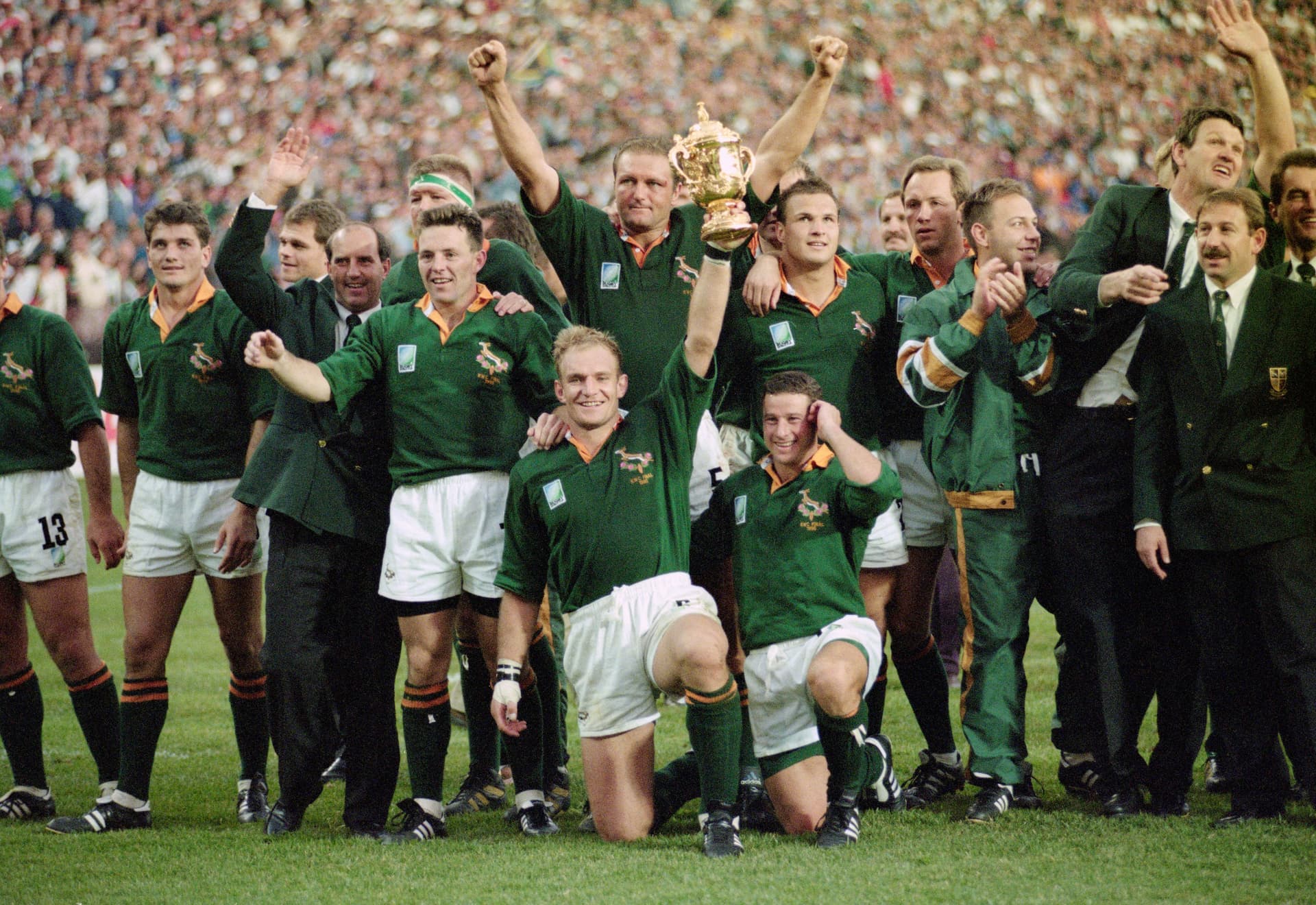Rugby
What Is a Drop Goal in Rugby?
Tries, conversions, penalties, drop goals, and penalty tries are five ways to score in rugby union. Tries are worth five, conversions are worth two, and penalties are three points. What is a drop goal in rugby, and how much are they worth?

Jannie De Beer//Getty Images
A drop goal is one of five methods of scoring points in rugby. A drop goal happens in open play; kickers do not place the ball on a kicking-tee. Players drop the ball onto the ground and kick it as it rises from the floor. A drop goal is also called a drop kick or a field goal, depending on which part of the world rugby is played. There are differences between rugby union and rugby league.
There are different rules and numbers of players in rugby’s two codes. Drop goals and drop kicks are called field goals in rugby league. Drop goals can also be attempted in rugby league and sevens rugby. Drop kicks cannot be attempted in touch or beach rugby because there are no posts. SportsBoom breaks down rugby's least attempted but most difficult method of scoring.
How Many Points Is a Drop Goal in Rugby Union?
Kicking drop goals is one of the toughest skills to master in rugby football. Drop goals are worth three points in rugby union and sevens; however, because of the open nature and ease of scoring in sevens, drop goals are rarely attempted. Drop kicks are, however, used to make conversions.
Kickers do not attempt to kick off a tee because time is short. Sevens rugby has two seven-minute halves, so kickers drop-kick the conversion. Conversions in all forms of rugby are worth two points. Drop goals (rugby union) and field goals (rugby league) differ in points worth. Field goals, however, are only worth one point in rugby league, so fewer are attempted.
Points-Scoring Systems in Rugby Football
| Types of Scores in Rugby | Points Awarded in Rugby Union | Points Awarded in Rugby League | Points Awarded in Sevens Rugby |
| Try | 5 | 4 | 5 |
| Conversion | 2 | 2 | 2 |
| Penalty | 3 | 2 | 3 |
| Drop Goal / FG | 3 | 1 | 3 |
| Penalty Try | 7 | 6 | 7 |
Drop goals are hard to pull off in the heat of battle. They are often attempted when an attacking team has run out of options and are tiring. Drop kicks are for free shots at three points if the attacking side has a penalty advantage within scoring range.
The flyhalf or fullback will drop behind the ruck and call for the ball to take a shot at three points. Often, multiple players run at the kicker, trying to charge down the drop kick or at least try to put off the kicker with pressure.
One reason for the lack of drop-kicking success rate statistics is the importance of the kick. Most of the drop-goal attempts take place at the end of the game. This usually occurs when the scores are within three points, but time is running out. The attacking side will venture as close as possible to within kicking range, and when the time is right, the kicker will call for the ball and take a shot at goal. Legendary moments have been born from match-winning drop kicks.
The Most Famous Drop Goals in Rugby History
1995 Rugby World Cup Final, Ellis Park, Johannesburg: South Africa vs. New Zealand
Drop goals have changed the course of rugby union history. There are several memorable drop goals. Two late drop goals have won Rugby World Cup (RWC) titles. Many drop-kicks have won important knockout matches. Rob Andrew, Zinzan Brooke, Jannie de Beer, Stephen Larkham, Jonny Wilkinson, and Dan Carter have all landed famous drop goals in RWC knock-out games.
But one drop goal stands out among the rest. The most iconic and important drop goal is, without a doubt, Joel Stransky’s 1995 Rugby World Cup final-winning kick. South Africa – only three years back on the international stage after isolation due to apartheid – hosted the third edition of the showpiece event.
The Springboks reached the final at Ellis Park in Johannesburg and, against all odds, beat the All Blacks to lift the William Webb Ellis Trophy. The most memorable image of a day with many is not Stransky’s drop goal but former South African President Nelson Mandela wearing François Pienaar’s number six rugby jersey.
Pienaar’s post-match “Forty-three million South Africans” speech is unforgettable. Mandela, wearing the iconic green and gold jersey, for so long the symbol of the apartheid, while sharing the podium with an Afrikaans Springbok captain, ushered in the hope of the “New South Africa”, and the ‘Rainbow Nation’ was born.
All these incredible, politically, and historically significant moments led to Clint Eastwood’s Oscar-nominated film Invictus in 2009. Matt Damon and Morgan Freeman played Pienaar and Mandela in a silver screen re-enactment of the events of RWC, including the final.

Nelson Mandela and François Pienaar//Getty Images
A tight, tense affair played out in the City of Gold. There were no tries, just penalties and drop kicks from the boots of Stransky and Andrew Mehrtens. The flyhalves traded two penalties apiece before Stransky landed a late drop kick to give South Africa a 9-6 halftime lead. Mehrtens levelled with a drop goal fifteen minutes after the break.
However, Mehrtens missed a sitter of a drop kick with less than a minute to play in the second half, which sent the game into extra time. Moreover, with only seven minutes remaining in the second half of extra time, Stransky slotted an incredible angled drop kick from 35 metres to win the game and seal the William Webb Ellis Trophy for South Africa.

South Africa captain Francois Pienaar holds aloft the Webb Ellis trophy//Getty Images
Joel Stransky and Andrew Merhtens discuss the World Cup-winning Drop Kick
The importance of a drop goal was summed up in those two moments. Joel Stransky converted both his drop goals, while Andrew Mehrtens was successful with only one of his two attempts. His second missed drop goal from in front of the posts might not have cost New Zealand the match, but it was the difference between winning and losing.
Stransky and Merhtens discussed the 95’ RWC final in an interview with World Rugby, the governing body for the sport, in 2016. The All Blacks first-five eighth said he did not anticipate the drop-kick from the scrum but during the next couple of phases. He explained he was out of position to charge down the kick because he was attacking Hennie Le Roux, not Stransky.
“I’ve set off for twelve [Le Roux], then suddenly realised [I was out of position] and tried to get back, but couldn’t get back in time,” said Merhtens. “I hoped, when I turned around, and crossed my fingers that it would miss, but with all due respect, it took off beautifully,” he added.
“I hit it so sweet, and I wish I kicked every single kick as well as that.” Stransky said. “Because it’s a drop kick, you’re not sure if you’ve got your body position and angle right. As soon as I looked up and saw how the ball was rotating and where it was going, I knew it was flying high and sweet.”
Stransky further explained the significance of the victory for South Africa. “It was iconic,” he said. “It was a sensitive time in our country’s history. It was almost fate and destiny colliding. There was so much more to [the win], and we as rugby players, were blessed and privileged to be a part of that game, and a part of our great nation’s history.”

Kaylan Geekie is a sports fanatic. He attended Durban High School before moving to Scotland, where he lived for 15 years. During his time in the United Kingdom, Kaylan graduated with a first-class BA Honours Degree in Sports Journalism at the University of the West of Scotland. Kaylan worked for nine years as the Match-Day Editor of SuperXV.com, reporting on Super Rugby, The Rugby Championship, the 2015 Men's Rugby World Cup and the 2017 British & Irish Lions series for the website.